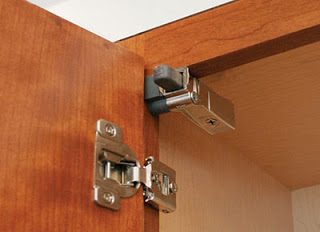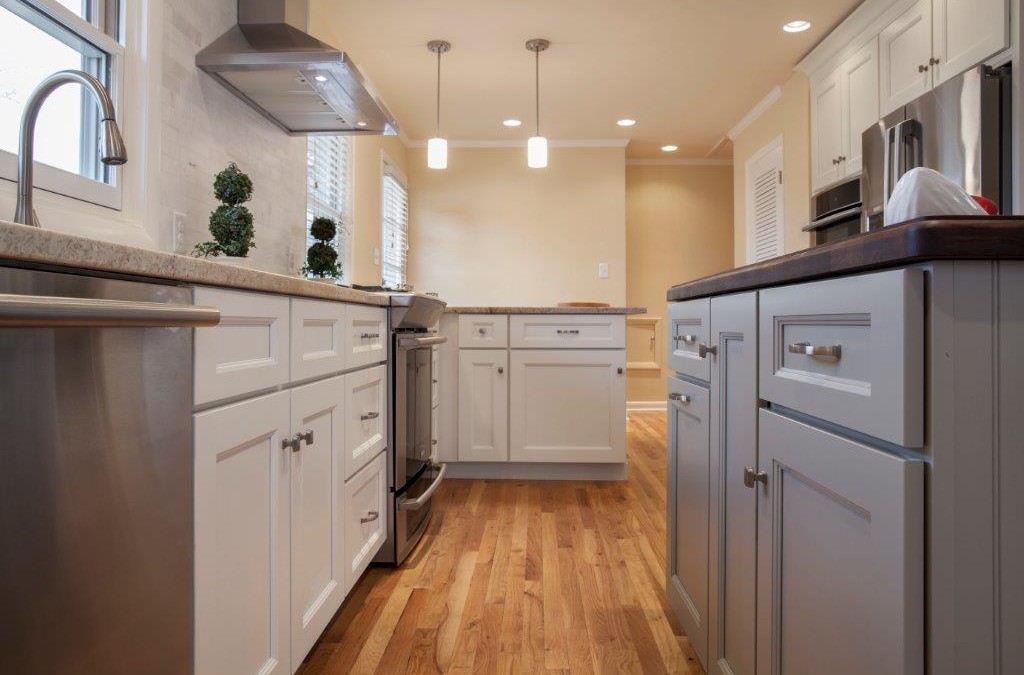by Cornerstone Cabinet Company | May 31, 2018 | Architects, Contractors
We don’t do this a lot but we can when needed for a project. We designed and built this metal table frame for our Scottsdale design center. The conference table top will be new Carrara quartz fabricated by Marlam Industries. King Steel & Ironworks fabricated the table to our design. They also fabricate our exclusive metal floating cabinet supports and custom countertop supports which eliminate the use of corbals in most...

by Chris Boulton | May 30, 2018 | Architects, Cabinets 101, Contractors, Homeowners, Interior Designers
There have been major recent advances within the home cabinet industry, in terms of how cabinet door hinges operate, the most recent of them being the soft-close hinge. This innovative product slows the closing process of a cabinet door, to the extent that instead of the traditional slamming sound we have all come to associate with a cabinet door closing, there is naught but silence, even when the door is closed with force. Soft-closing hinge attachments need only be added to one hinge per cabinet door, or two units per door in the event that you have a larger pantry-style door. Benefits of soft-close cabinetry Whether you want to eliminate slamming cabinet doors, lower the wear and tear on your cabinets, or just make a safer environment for little fingers, installing the soft-close attachment is a great addition to your cabinets. You’ll be surprised at how much they can contribute to a noiseless environment in your kitchen, and how they make cooking more relaxing and enjoyable by removing the “thunk” of a slamming door from the hustle and bustle of a busy cooking experience. Soft-close cabinetry installation Our design consultants can walk you through the process of learning which design of hinge your doors currently have installed, and then will help you decide how many hinges to purchase for your unique home kitchen. After you have completed this initial step, we can have one of our professional techs install the soft-close mechanisms for you with diligence and efficiency. Before you know it, you’ll have a quiet and safe kitchen for you and your family to enjoy. Why choose soft-close...

by Chris Boulton | May 23, 2018 | Architects, Cabinets 101, Contractors, Homeowners, Interior Designers
The term refacing refers to the process of changing the face or look of your home office, entertainment center, bathroom and kitchen cabinets by installing new doors and drawer fronts, and changing the appearance of the face frames of the cabinets to a new stain, and quite often a new wood species. Cabinet refacing is generally more ecologically sound than full scale kitchen remodeling, since the amount of debris put in the landfill is generally cut by almost three quarters. Ecologically sound materials such as bamboo can be selected to replace the outmoded hardwood or laminate doors and fronts. Most companies here in Phoenix, Arizona that perform a refacing service use thin layers of wood veneers, PVC plastics, or laminates to put on top of your existing cabinet frames to give it a new face or appearance. The work is very similar but you need to understand which technique they plan to use before you agree to have the work done. The process of refacing, using veneers etc. is very labor intensive and has many limitations, such as a substantial amount of cabinet preparation that needs to take place in order to properly reface your cabinets, a limited amount of stain or color choices, and a limited amount of wood species available. The plastics and laminates used do not look exactly like wood and quite often do not match very well with the new wood colors. Real Wood Refacing However, a new way to reface cabinets has been developed that eliminates many of the limitations that cabinet refacing companies have faced in the past. The newest and best way...
by Cornerstone Cabinet Company | May 15, 2018 | Architects, Contractors, Interior Designers
Here at Cornerstone Cabinet Company, we’re seeing all 7 of these trends in our new projects. Which would you like to include in your new kitchen? 7 Kitchen Cabinet Trends To...
by Cornerstone Cabinet Company | May 2, 2018 | Contractors, Interior Designers
Quartz vs. Soapstone countertops Quartz leads the race in countertop materials. As kitchen designs evolve, brands like Silestone, Caesarstone, and Cambria, open options to clients seeking their personal imprint. Alternatively, Soapstone provides an option for natural material. Granite and marble may be receding, but they aren’t dead. But Quartz and Soapstone have distinct characteristics and advantages that suit our clients’ changing needs. The best fit is determined by what’s most important to them. Quartz and soapstone enhance ease of use The term ‘sealant’ evokes the idea of chemicals. The non-porous surfaces of both Quartz and Soapstone appeal to clients as less work and environmentally friendly. Other advantages to non-porous surfaces are: Stain resistance. Scratch resistance. Heat resistance. Resistant to bacteria. Bacterial resistance can be a huge selling point for clients with kids and grandkids. Capturing the right kitchen design and usage When color is critical, Quartz offers more options to blend or contrast with the neutral paint shades that are currently so popular. Manufactured materials have the added advantage of uniform appearance that allows pieces to butt up to each other to make seams almost invisible. On the other hand, soapstone appeals to those who value the natural look. It can be quarried in the US, but Brazilian soapstone has the same type of veining as marble. Coming from nature limits the color choices and it’s best for those desiring gray to black surfaces. Although not required, rubbing soapstone with mineral oil darkens the color. This is definitely not the choice for a colorful kitchen and requires working with one slab per countertop to maintain its uniform appearance. The...
by Cornerstone Cabinet Company | Apr 24, 2018 | Contractors, Homeowners, Interior Designers, Uncategorized
Forbes Magazine details 6 upgrades which cost less than $1000 yet give you the biggest bang for your buck if you are selling your home. The top 2 have to do with cabinets! Read...



